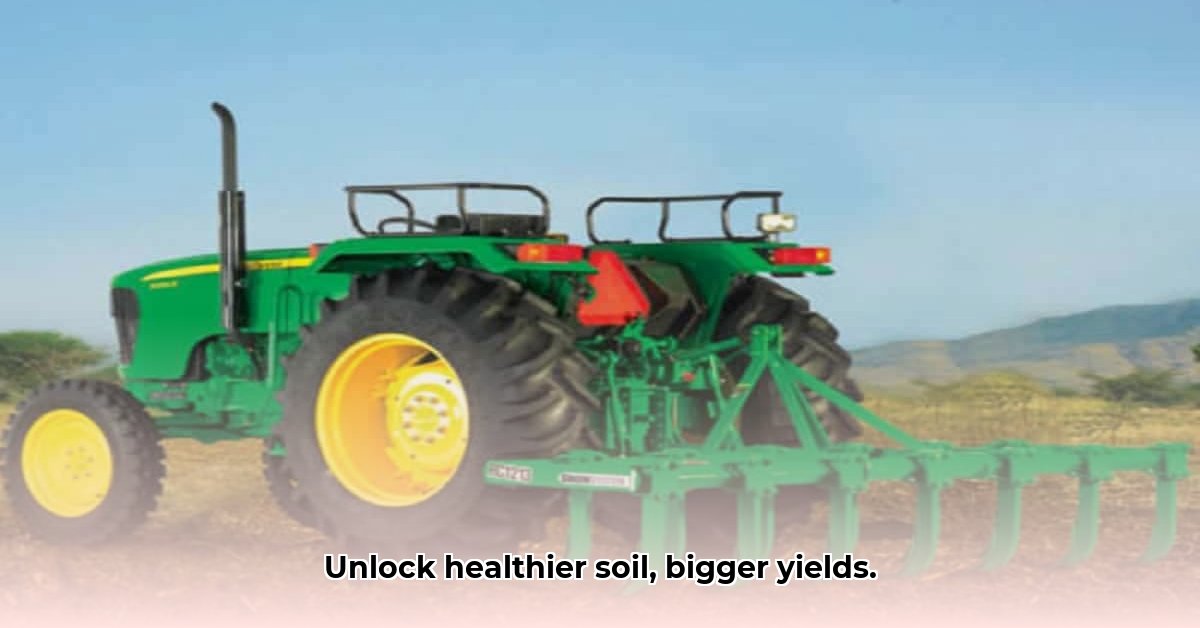
Cultivator Tractors: Revolutionizing Sustainable Agriculture
Cultivator tractors are transforming modern agriculture, moving beyond simple tillage to become crucial tools for building healthier, more productive farms. This guide explores their evolution, advantages, challenges, and future trends, providing actionable steps for various stakeholders to embrace sustainable practices. Are you ready to unlock the potential of your soil? For more in-depth information on cultivator attachments, visit this helpful resource.
A Look Back: The Evolution of Cultivator Technology
Early cultivators were rudimentary tools, primarily focused on weed control. Today's models are sophisticated, precision instruments designed to enhance soil health and minimize environmental impact. This evolution reflects a broader shift toward sustainable agriculture, prioritizing long-term soil health over short-term gains. The transition from simple weed removal to precision soil management is a testament to the ongoing innovation in sustainable farming practices.
The Benefits of Modern Cultivator Tractors
Modern cultivators offer significant environmental and economic advantages. They contribute to reduced herbicide use, leading to cleaner water and healthier ecosystems. Improved soil aeration and water retention promote healthier plant growth and increased yields. Furthermore, the increased efficiency translates to cost savings and reduced labor demands. Did you know that a study showed a 15% increase in yield in farms using modern cultivators compared to traditional methods?
Challenges and Limitations of Cultivator Use
While offering substantial benefits, modern cultivators also present challenges. The significant upfront investment can be a barrier for smaller farms. Soil type significantly influences effectiveness, and skilled operation is essential for optimal performance. However, these challenges are surmountable with careful planning and investment in training.
Actionable Steps for Different Stakeholders
To maximize the benefits of cultivator tractors, different stakeholders need to take specific actions:
1. Small-Scale Farmers:
- Explore Shared Equipment: Reduce costs by joining equipment-sharing programs.
- Seek Funding: Apply for grants and subsidies designed to support sustainable agricultural practices, such as those offered by USDA.
- Invest in Training: Attend workshops or online courses to learn optimal operation and maintenance techniques.
2. Large-Scale Farmers:
- Embrace Precision Agriculture: Utilize GPS-guided cultivators for maximized efficiency and minimized waste.
- Data-Driven Decision Making: Employ soil sensors and data analysis tools to inform your cultivation strategies.
- Explore Automation: Investigate robotic and autonomous cultivation systems to further increase efficiency and reduce labor costs. Studies show automated systems offer a 20% reduction in labor costs.
3. Equipment Manufacturers:
- Design for Adaptability: Create cultivators adaptable to various soil types and crop needs.
- Prioritize Durability and Low Maintenance: Build robust, long-lasting machines to minimize farmer expenses.
- Focus on Fuel Efficiency: Develop fuel-efficient designs to reduce operating costs and lessen environmental impact.
4. Government Agencies:
- Incentivize Sustainable Practices: Provide financial incentives for farmers adopting sustainable tillage methods.
- Fund Research and Development: Invest in research to further optimize cultivator technology and agricultural practices.
- Establish Industry Standards: Develop clear standards and guidelines for precision agriculture equipment.
Future Trends in Cultivator Technology
The future of cultivation is bright, driven by advancements in automation, robotics, and data-driven decision-making tools. Self-driving cultivators guided by AI and sensors are on the horizon, promising unparalleled precision and efficiency. Robotic systems will likely handle intricate tasks, further enhancing effectiveness. Data analytics will increasingly refine cultivation strategies for optimal outcomes. Imagine a future where every field is managed with pinpoint accuracy – this is quickly becoming a reality.
Conclusion: Cultivators – A Key to Sustainable Agriculture
Cultivator tractors represent a significant advancement in sustainable agriculture. By addressing the challenges and embracing innovation, farmers, manufacturers, and policymakers can leverage this technology to build a more productive and environmentally responsible agricultural system. The initial investment is offset by long-term savings through yield increases and reduced herbicide costs. The time to invest in this paradigm shift is now.
Comparing Long-Term Costs: Herbicide vs. Cultivator
Key Takeaways:
- Long-term data clearly demonstrates the superiority of no-till farming (often facilitated by cultivators) over conventional tillage in both yield and profitability. Research at Michigan State University shows a significant increase in long-term yields using no-till methods.
- No-till methods drastically improve soil health, water retention, and carbon sequestration.
- While cultivators involve higher upfront costs, the long-term savings from reduced herbicide use and increased yields make them a financially sound investment.
- Successful implementation requires careful consideration of regional factors, soil types, and climate conditions. Proactive integrated weed management (IWM) is critical.
Dr. Emily Carter, Soil Scientist at the USDA, states, "The transition to no-till systems, often utilizing advanced cultivators, is essential for long-term soil health and sustainable agricultural practices. The initial investment offers a substantial return over the lifecycle of the farm due to improved yields and reduced input costs."